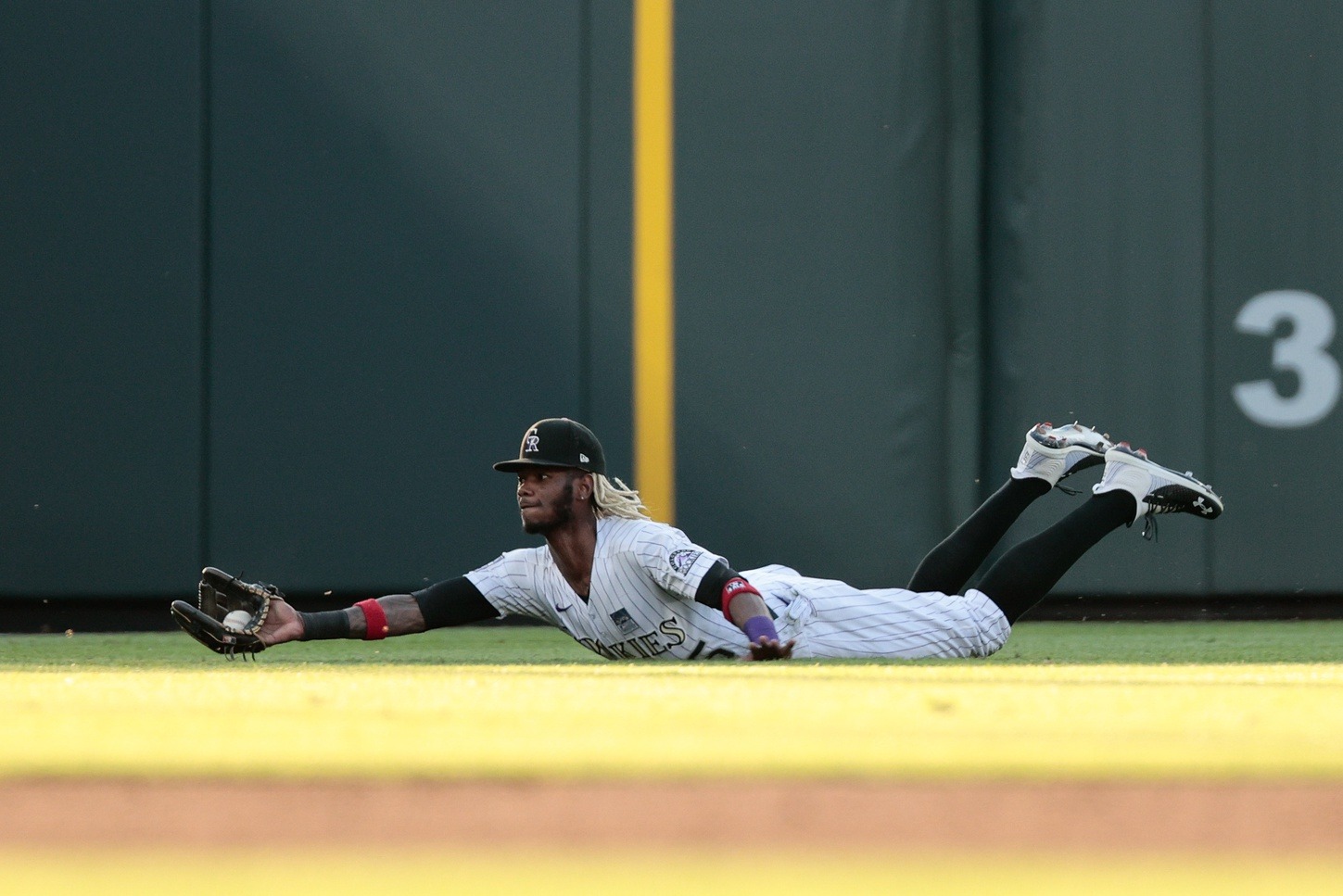© 2025 ALLCITY Network Inc.
All rights reserved.

At the plate, Raimel Tapia is who he has always been.
Before he even arrived in the United States as a teenager, he was making a name for himself in the Dominican Republic thanks to his prodigious hand-eye coordination.
And he did, as the saying, goes, “hit his way off the island.”
Throughout his minor league career, he carved out a pretty clear architype for himself. He was a fantastic contact hitter with exceptional athletic tools.
But the thinking about Tapia’s ability to maximize his potential often centered around whether or not he was going to be able to increase his power output and/or cut down on the mistakes he regularly made defensively and on the base paths.
To put it plainly, everything other than his contact tool was incredibly raw.
And Tapia’s mistakes tended to mitigate his athleticism.
Poor reads of pitchers and bad instincts led to a player with elite speed who had pedestrian stolen base success rates at best. Similarly, his good legs and strong arm meant little on defense with his propensity to get late jumps and fire in throws that totally missed the cutoff man or even went to the wrong bag.
His offensive approach may well remain something that is debated for the rest of his career. It doesn’t look like that extra pop is ever going to arrive, but it also looks like the contact skill will play consistently in MLB.
Surprisingly, though, it isn’t all those hits he has racked up since taking over the leadoff spot or the fact that he is batting .299 over his last 150 games that have been the most important evolution for Tap.
Make no mistake, if he had continued to be baffled with the bat – the way he was as a part-timer early in his career – he wouldn’t even be here right now. That was the all-important first step.
However, there is an even bigger step he appears to be taking, shocking even those who have followed him closer than anyone over the years.
He has dramatically improved on the bases and in the field.

Tapia got his first bit of real playing time in 2017, picking up 133.1 innings of left field defense work. And he was bad, posting a DRS of -2 along with a -1 for his 20 innings in center field.
Since DRS (Defensive Runs Saved) is an accumulative stat, the more the you play the more chances you have to build either positive or negative value.
Given that, it was no surprise that when he played 721.1 innings in left field in 2019, Tapia’s negative value increased to a -5. Though, oddly enough, he started to show the first signs of turning it around when he moved over to center field more later in the season and posted a positive 2 DRS in 83.2 innings.
Even with that, Tapia entered the 2020 campaign, with negative rankings in just about every defensive category including DRS, UZR, Arm, and range.
Last year, he showed more subtle growth, playing only left field for 310.2 innings and posting a solid 2 DRS.
In 2021, though, he has arguably been the best defensive left fielder in baseball.
Tapia has already accrued 6 DRS, which ties him with Tyler O’Neill of the St. Louis Cardinals for first among qualified defenders. Tap ranks first in UZR/150 with 11.4 to O’Neill’s 8.8 and ranks first in Fangraphs overall “Def” ranking which combines several stats.
In fact, Tapia has the third highest UZR/150 among all qualified outfielders at any position behind only Jackie Bradley Jr. and Jayson Heyward. He is sixth in DRS.
Even his arm rates out as fourth-best among outfielders, again according to Fangraphs, who have him just ahead of Ronald Acuna Jr. and Hunter Renfroe.
That’s quite the turnaround.

His speed game has followed a similar path.
Before he made his MLB debut, Tapia showed that he had plenty of get up and go by swiping 120 bags in 577 games.
Pretty good, right?
Well, not really considering he was also caught 71 times, giving him a success rate of about 62 percent.
Conventional wisdom says that in order to be a base stealer who is truly adding value to your team, you need to be successful at least 75 percent of the time.
So Tapia’s legs were an asset only in theory when he arrived in the Bigs.
He wasn’t given many opportunities to run in 2016 and 2017 but did grab eight bags while only being caught twice. He barely smelled MLB in 2018 but continued his solid success rate in 2019 by swiping nine more bases while being thrown out thrice.
The pandemic season saw him stay right in that lane with another 8-to-2 performance.
That put him right at a 78 percent success rate to that point in his MLB career but in disjointed small sample sizes. Looking at his track record in the minors would give several reasons to believe that the other shoe was about to drop. But it didn’t.
Instead, Tapia has had easily the best season of his pro career on the base paths. He has 19 stolen bases and has only been caught three times for an 86.3 percent success rate.
That brings his career totals (as of the publishing of this piece) to 44 stolen bags and 10 caught stealing, a success rate of 81.5 percent.
Willy Tavares is the Rockies all time leader in SB% with 86.33 percent and Carlos Gonzalez is second with 80.27 percent.
In other words, in a very short time, Tapia has gone from a complete puzzle on the bases to one of Colorado’s best-ever base-stealers… if he can keep it up.

Whether these evolutions are the new normal or he has just been in the zone all year, Tapia’s defense and speed skills have changed the conversation around him.
It used to be that these were wild card elements of his game that you just kinda had to accept in hopes that he would hit enough to make it worth everyone’s while. Honestly, if these parts of his game had remained so raw, Tapia would have needed to develop that power that some are still searching for.
As it stands, he should no longer be defined by one tool.
He’s no longer a slappy hitter with a ton of question marks. I mean… he’s still a slappy hitter. But that is no longer all he brings.
Raimel Tapia has quietly, and very quickly, turned himself into a weapon no matter which part of the baseball diamond he’s digging into with his cleats.
Comments
Share your thoughts
Join the conversation



